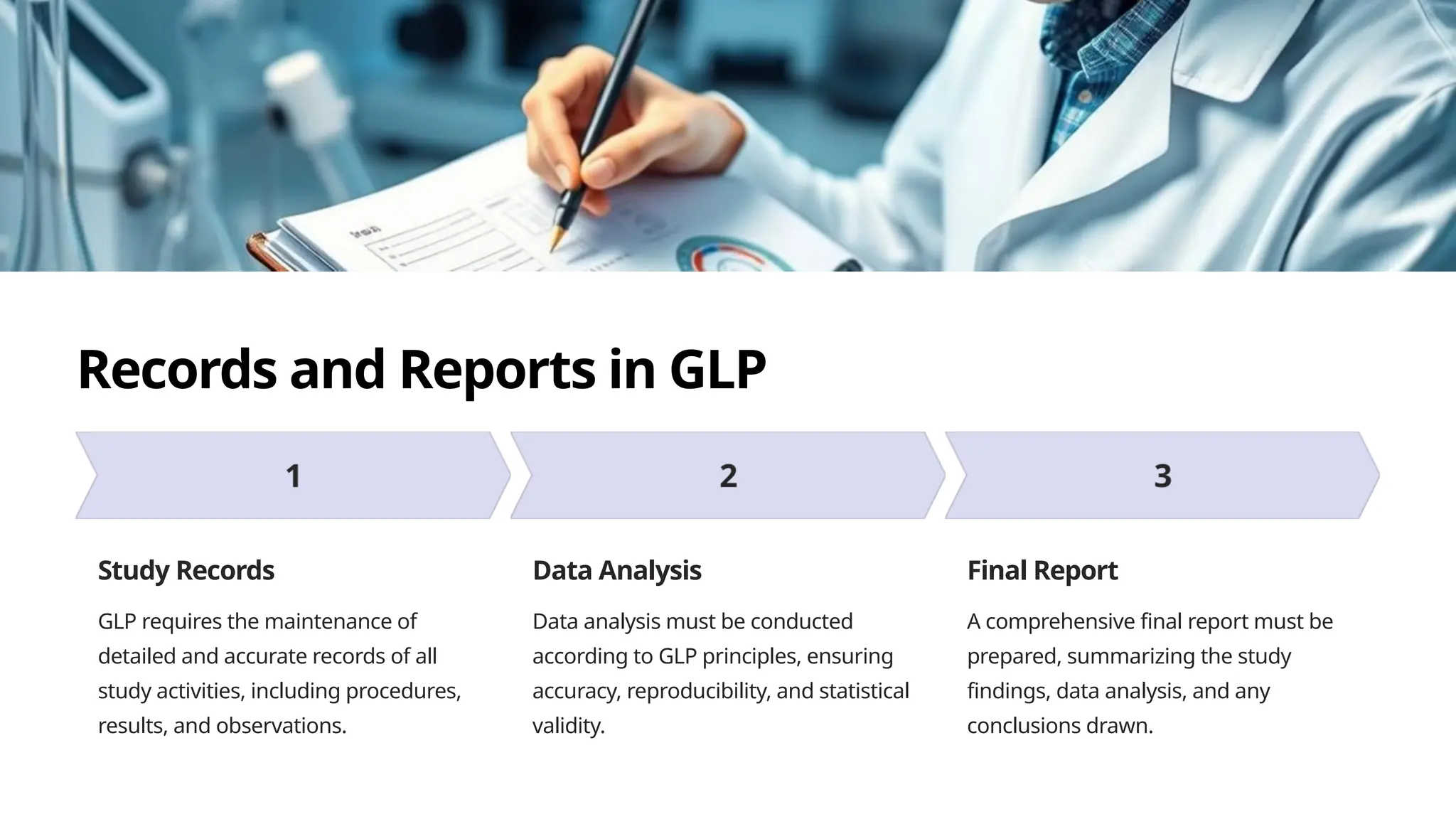Good Laboratory Practices (GLP) establish standards for the conduct and reporting of nonclinical safety studies to ensure reliable scientific data. Key components include quality control of test articles, meticulous documentation, and proper facility management, which collectively safeguard public health and the environment. Compliance with GLP is essential, with regular audits and the potential for disqualification of testing facilities that fail to meet these standards.










